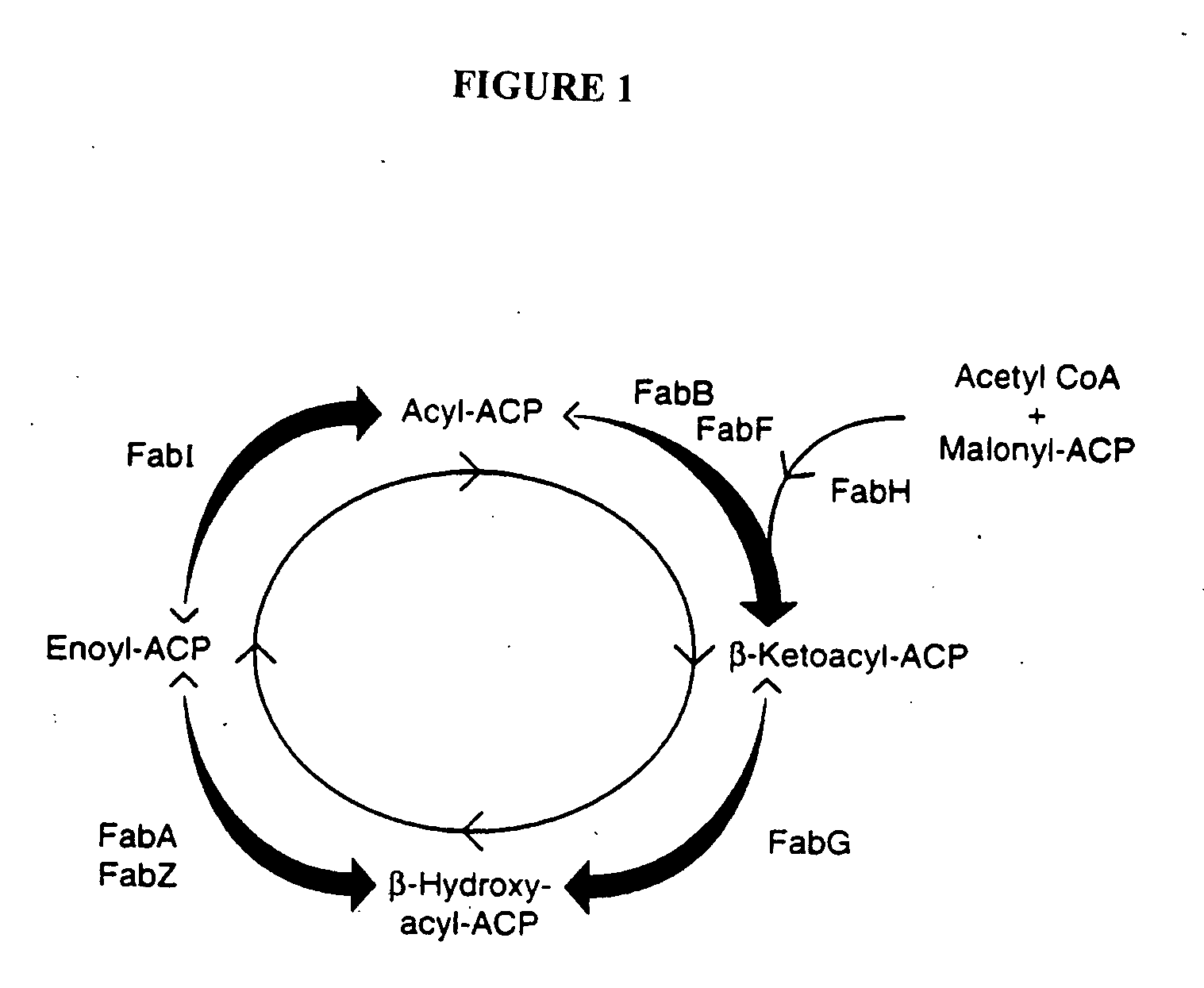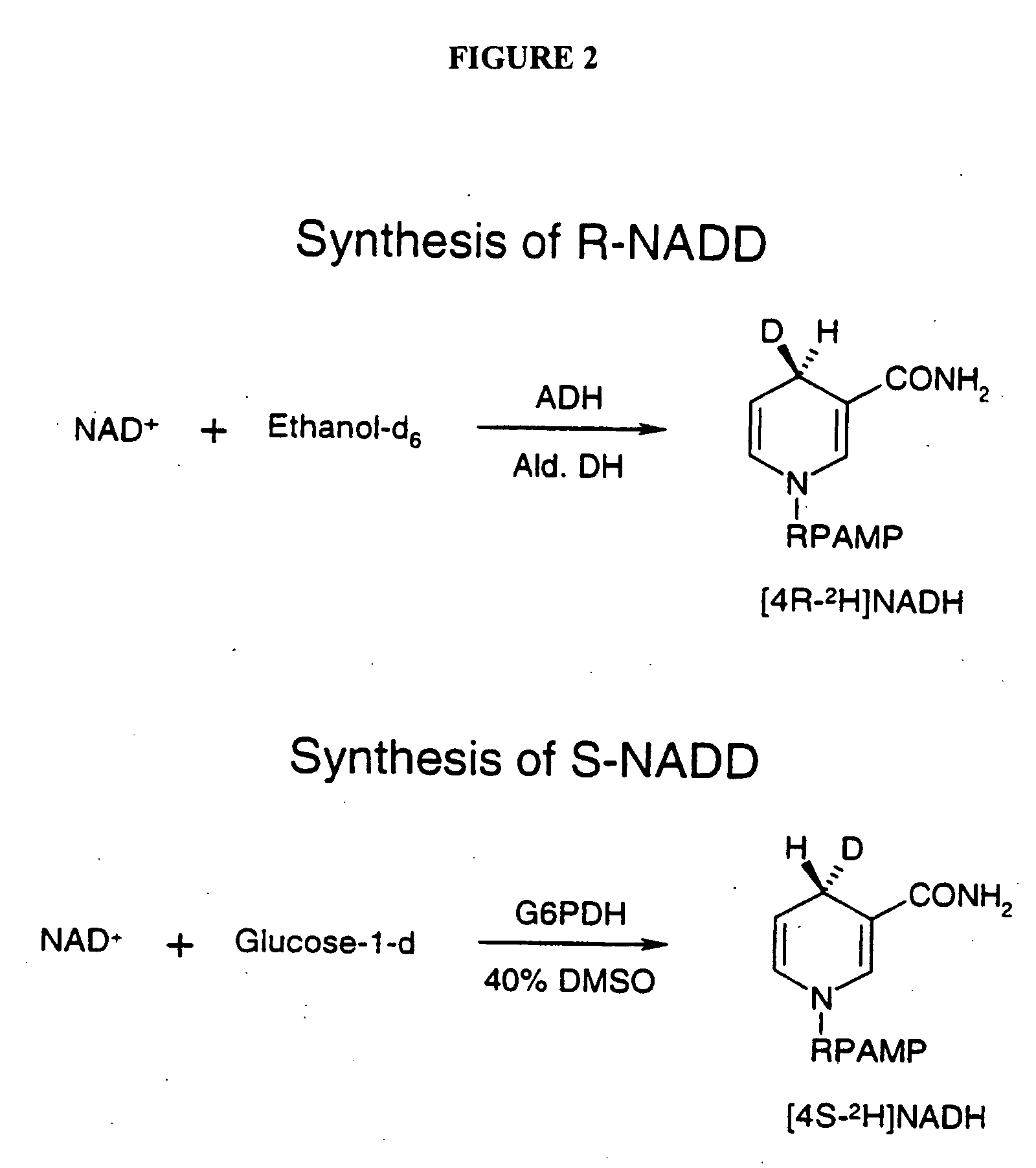Methods of using Fab I and compounds modulating Fab I activity
a technology of fab i and activity, applied in the field of polynucleotides and polypeptides, to achieve the effects of preventing expression of fab i, eliciting or augmenting fab i-induced responses, and inhibiting fab i-induced effects
- Summary
- Abstract
- Description
- Claims
- Application Information
AI Technical Summary
Benefits of technology
Problems solved by technology
Method used
Image
Examples
example 1
Isolation and Sequencing of S. aureus FAB I Gene
[0354] The polynucleotide having the DNA sequence given in SEQ ID NO:1 was obtained from the sequencing of a library of clones of chromosomal DNA of S.aureus WCUH 29in E.coli. It has been demonstrated by the process herein described that it is transcribed in vivo in an established infection of S.aureus WCUH 29in a mouse model of infection.
[0355] To obtain the polynucleotide encoding FAB I protein using the DNA sequence given in SEQ ID NO:1 typically a library of clones of chromosomal DNA of S.aureus WCUH 29 in E.coli or some other suitable host is probed with a radiolabelled oligonucleotide, preferably a 17 mer or longer, derived from the partial sequence. Clones carrying DNA identical to that of the probe can then be distinguished using high stringency washes. By sequencing the individual clones thus identified with sequencing primers designed from the original sequence it is then possible to extend the sequence in both directions t...
example 2
FAB I Enzyme Activity Analysis
[0362] The activity of FAB I protein may be measured using either crotonoyl-CoA or crotonoyl-ACP as a substrate (Bergler, et al, (1994), J.Biol.Chem. 269, 5493-5496) and monitoring the decrease in absorbance at 340 nm due to the consumption of NADH. Crotonoyl-ACP (Km 22 μM) is a better substrate than crotonoyl-CoA (Km 2.7 mM), crotonoyl-CoA is available from Sigma (C6146). A diazaborine derivative may be used as a positive control, this should be readily available via a 2 step synthesis with publicly available starting materials using methods known in the art. Test compounds may be added to this assay to determine whether they agonize or antagonize enzymatic activity.
example 3
Gene Immunotherapeutic Expression of S. aureus FAB I
[0363] Fibroblasts are obtained from a subject by skin biopsy. The resulting tissue is placed in tissue-culture medium and separated into small pieces. Small chunks of the tissue are placed on a wet surface of a tissue culture flask, approximately ten pieces are placed in each flask. The flask is turned upside down, closed tight and left at room temperature overnight. After 24 hours at room temperature, the flask is inverted—the chunks of tissue remain fixed to the bottom of the flask—and fresh media is added (e.g., Ham's F12 media, with 10% FBS, penicillin and streptomycin). The tissue is then incubated at 37° C. for approximately one week. At this time, fresh media is added and subsequently changed every several days. After an additional two weeks in culture, a monolayer of fibroblasts emerges. The monolayer is trypsinized and scaled into larger flasks.
[0364] A vector for gene therapy is digested with restriction enzymes for cl...
PUM
| Property | Measurement | Unit |
|---|---|---|
| Fraction | aaaaa | aaaaa |
| Fraction | aaaaa | aaaaa |
| Fraction | aaaaa | aaaaa |
Abstract
Description
Claims
Application Information
 Login to View More
Login to View More - R&D
- Intellectual Property
- Life Sciences
- Materials
- Tech Scout
- Unparalleled Data Quality
- Higher Quality Content
- 60% Fewer Hallucinations
Browse by: Latest US Patents, China's latest patents, Technical Efficacy Thesaurus, Application Domain, Technology Topic, Popular Technical Reports.
© 2025 PatSnap. All rights reserved.Legal|Privacy policy|Modern Slavery Act Transparency Statement|Sitemap|About US| Contact US: help@patsnap.com



